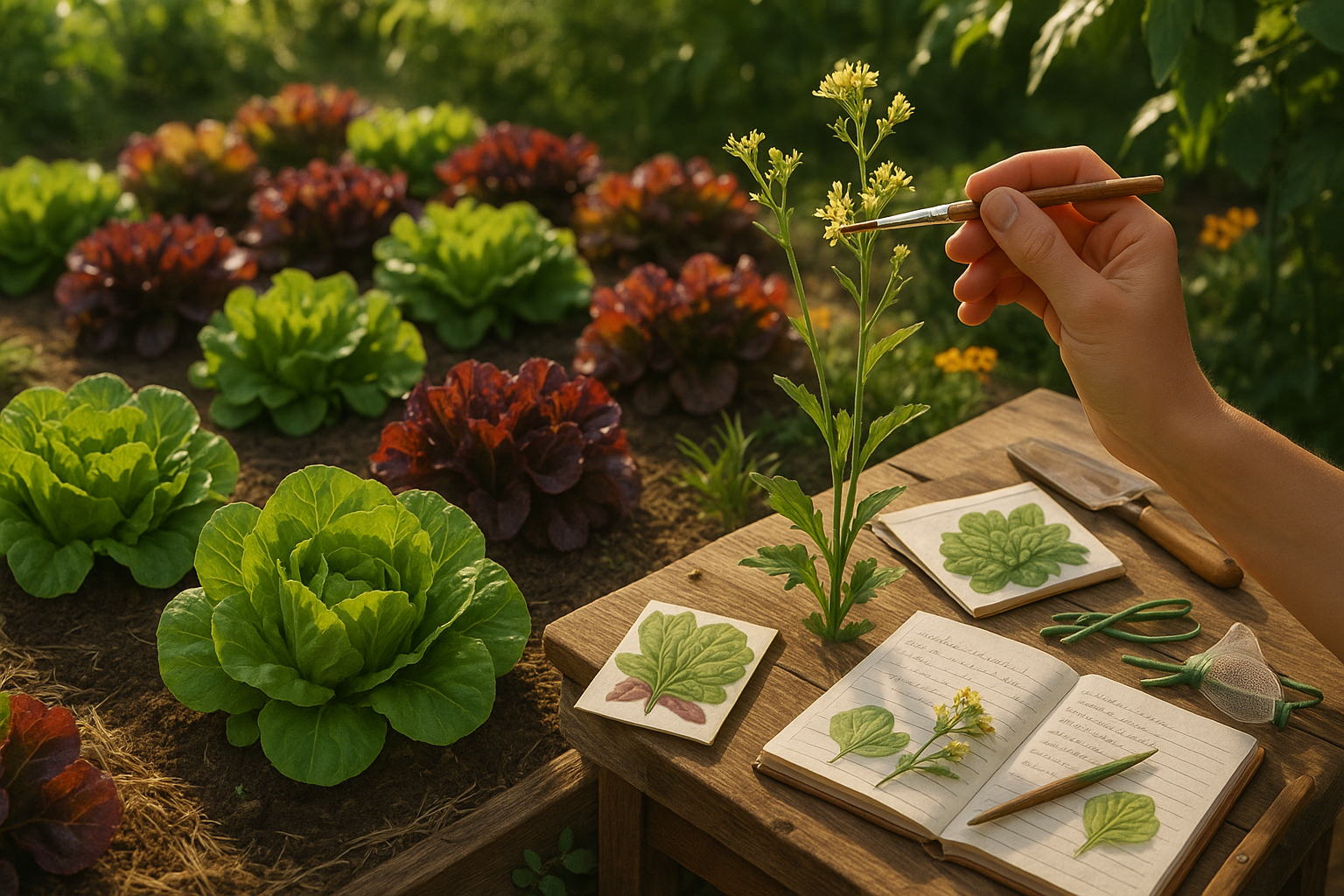Introduction
Breeding lettuce is an exciting opportunity for home gardeners to take customization into their own hands, crafting unique varieties with flavors, colors, or resilience you simply can’t find at the store. Imagine a crisp head that’s slow to bolt in summer, or leaves blended from your favorite buttery textures and peppery undertones — all grown from seeds you selected.
While breeding lettuce takes time, patience, and a willingness to experiment, the rewards are both practical and deeply satisfying. Beginners should expect to spend a few seasons observing, selecting, and saving seeds, but with careful attention, you’ll gradually cultivate your perfect crop.
In this guide, we’ll walk through choosing parent plants, hand-pollinating flowers, collecting seeds, and evaluating your new lettuce offspring. Whether you’re seeking disease resistance, local adaptability, or just a better-tasting salad, breeding lettuce puts you at the heart of your garden’s evolution.
Understanding Lettuce Genetics and Traits
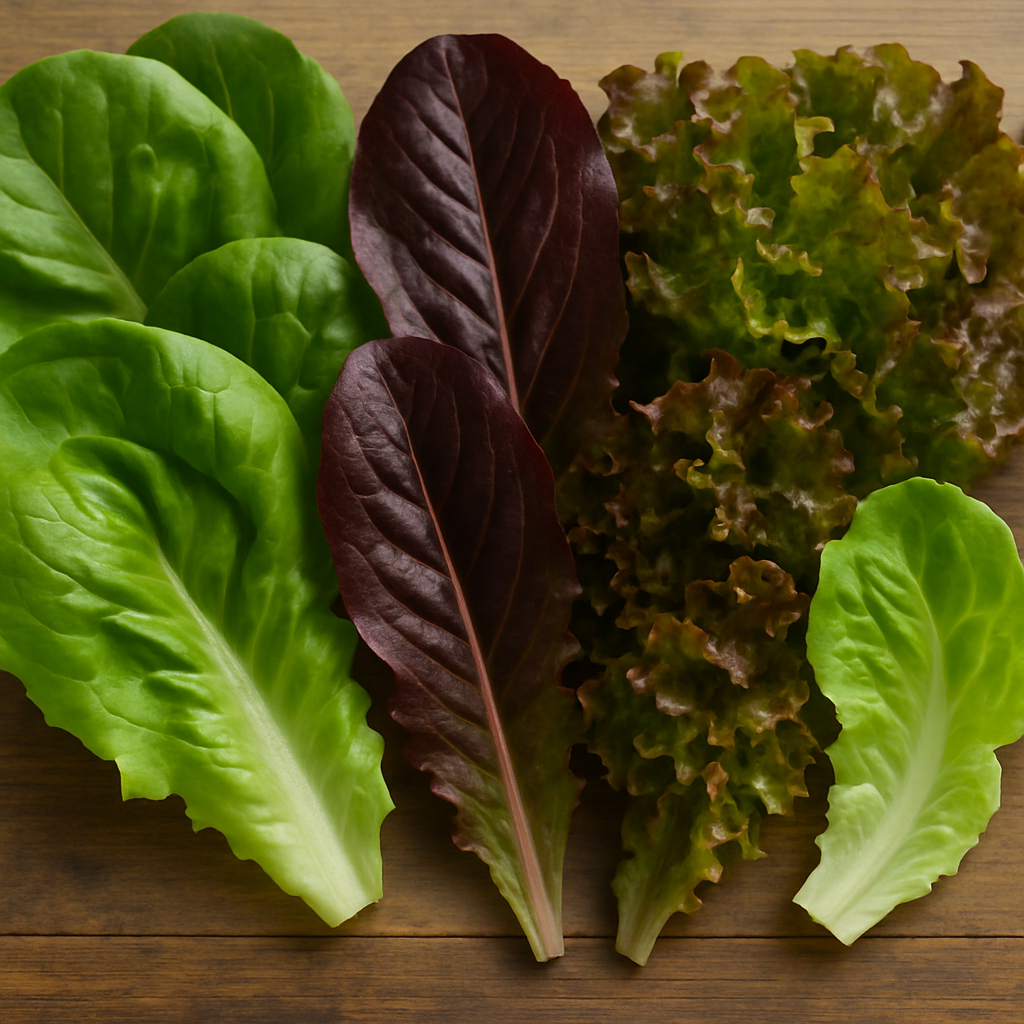
When breeding lettuce, growers focus on a variety of traits to develop better, more resilient crops. Flavors can range from mild and buttery to sharp and slightly bitter, allowing breeders to select plants that match specific culinary preferences.
Texture is another key consideration—whether choosing the velvety softness of butterhead leaves or the satisfying crunch of crispheads, texture can make or break a salad. Many also seek rich green, red, or bronze colors, knowing that visual appeal boosts market success.
Practical traits like bolt resistance are essential, especially in warmer climates where lettuce plants may flower and turn bitter prematurely. Disease resistance is another priority; breeders work to fend off common threats like downy mildew or powdery mildew by selecting naturally hardy plants.
While lettuce is primarily self-pollinating, it can cross-pollinate, particularly in close plantings or windy conditions, so careful placement is important for maintaining pure lines.
From the first planting, keep detailed notes on each plant’s growth, health, and flavor profile. Good recordkeeping helps track which parent plants contribute desirable traits and allows you to refine your breeding projects season after season.
Choosing Parent Plants
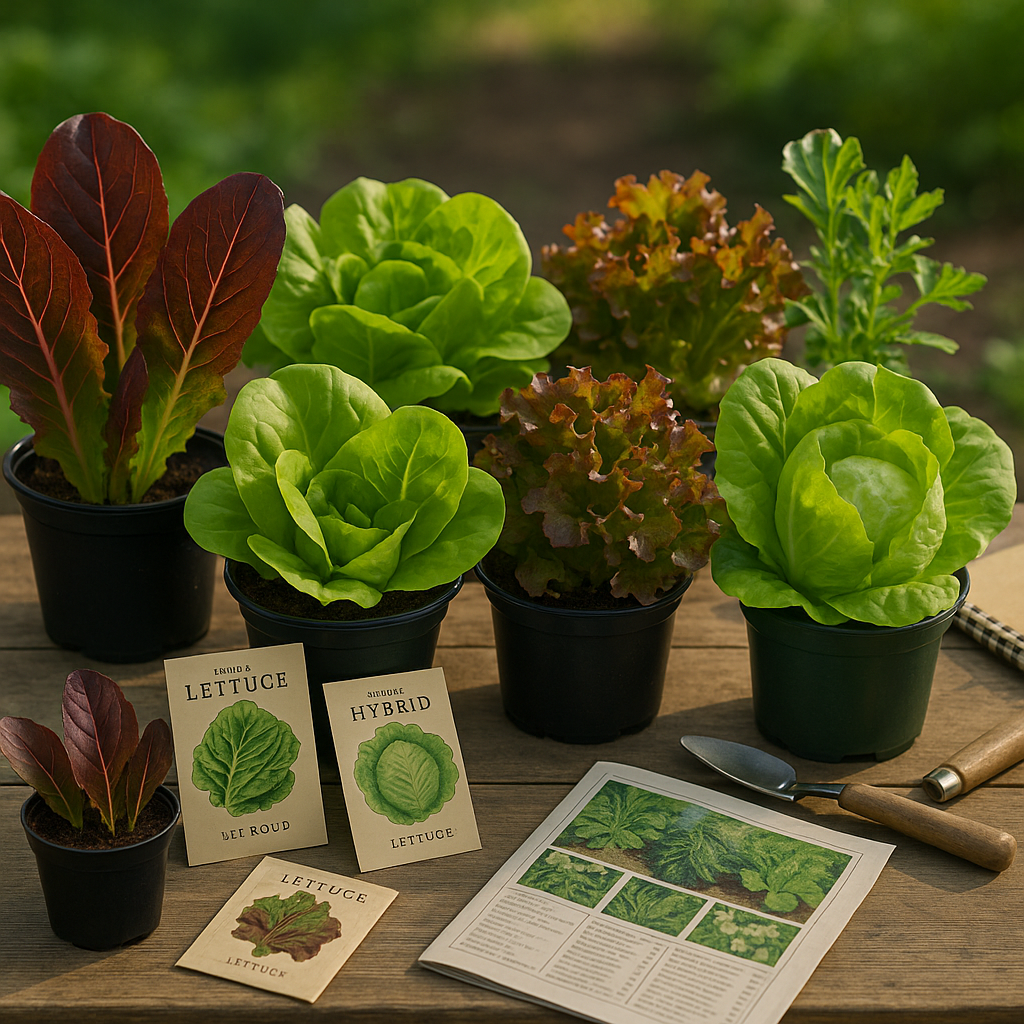
When choosing parent plants for breeding your own lettuce, start by identifying the traits you want to combine, such as crisp texture, colorful leaves, disease resistance, or bolt tolerance. Research different lettuce varieties—both leaf and head types—and make a shortlist of those that match your goals.
For example, you might pair a red Romaine known for its striking color with a butterhead prized for its soft leaves and mild flavor. When sourcing seeds, consider reputable seed companies, local nurseries, or even gardening exchanges.
Heirloom varieties are open-pollinated and can be saved and replanted year after year, which is ideal if you’re interested in ongoing selection and adaptation. In contrast, hybrid varieties tend to offer uniformity and sometimes better disease resistance but may not reliably pass on all traits to the next generation.
Be sure to select at least a few genetically different types, as mixing diverse plants increases your chances of producing robust, adaptable offspring with improved traits. Also, look for varieties that are proven to thrive in your local climate—ask fellow gardeners or check regional seed catalogs for advice.
By focusing on both desirable characteristics and genetic diversity, you’ll set a strong foundation for successful lettuce breeding in your garden.
Making Crosses
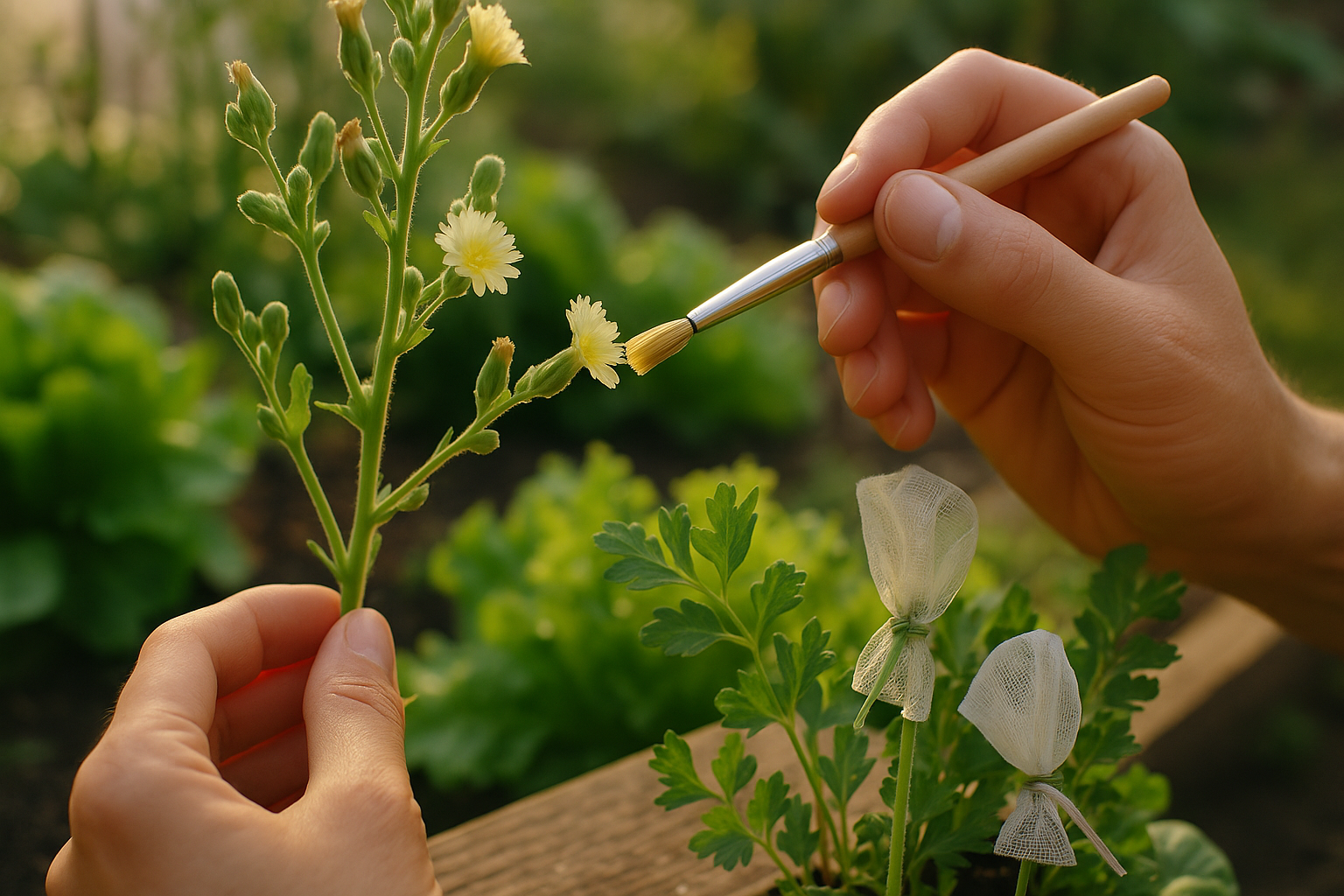
Hand-pollinating lettuce flowers can be a rewarding way to breed your own unique varieties, but timing and careful handling are key. Lettuce is largely self-pollinating, so it’s crucial to isolate plants you want to cross before they flower—grow them in separate cages or use fine mesh bags to keep out stray pollen.
Start early in the morning when flowers first open; that’s when pollen is most viable. To pollinate by hand, gently open a flower on your chosen female plant and use a small paintbrush or cotton swab to collect pollen from the stamens of your selected male flower. Lightly dab the brush onto the stigma of the female flower, repeating for several flowers to ensure a good seed set.
Mark pollinated blooms with twist ties or colored string so you’ll remember which have been crossed. Once pollinated, re-bag the flowers using lightweight organza or mesh bags to prevent stray pollen from entering and to discourage insects.
Keep a careful record of your crosses in a notebook, including plant variety, date, and the traits you hope to combine.
Tools and Tips for Beginners
For beginners, simple tools like clean paintbrushes, cotton swabs, mesh or organza bags, twist ties, and labels are all you’ll need to get started. Always work gently to avoid damaging the delicate flowers, and wash your tools between plants to prevent accidental pollen transfer and contamination.
With patience and the right setup, you’ll soon be producing your own custom lettuce seeds.
Growing, Selecting, and Saving Seeds
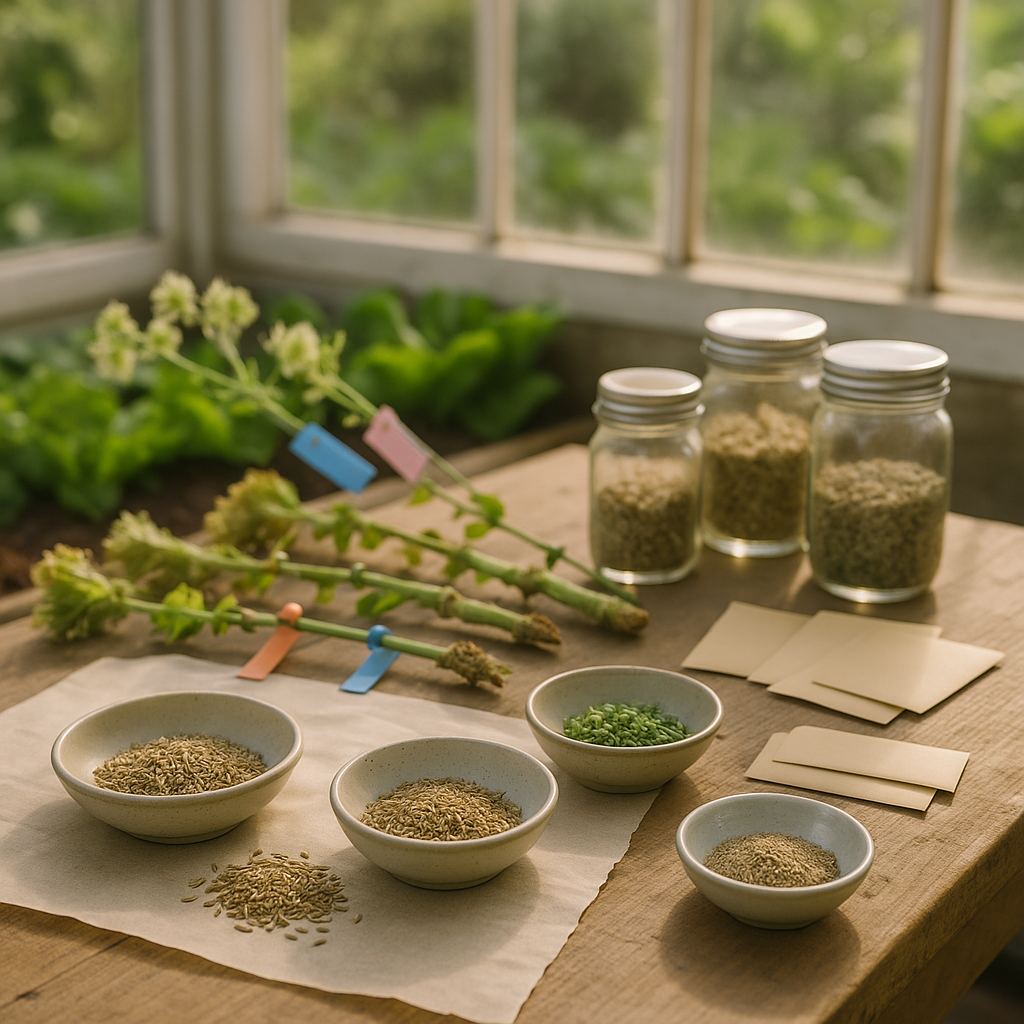
Starting your own seed-saving journey is both rewarding and empowering, especially when you’re aiming to refine or preserve a favorite variety. To begin, grow a larger-than-usual population—ideally at least 20-30 plants for self-pollinated crops like tomatoes, or 50-100 for cross-pollinated crops like corn or squash.
This helps maintain genetic diversity, avoids inbreeding, and ensures your future seeds stay healthy and productive. As your plants grow, carefully observe and record their traits, paying close attention to characteristics you’d like to see in the next generation, such as disease resistance, fruit size, flavor, or early maturity.
Use a notebook or spreadsheet to tag plants and jot down notes—simple color-coded tags tied to stems can help you track which plants are your top contenders. When fruits mature, collect seeds only from those that meet your target traits.
Make sure to clean and dry the seeds thoroughly; for wet-seeded crops like tomatoes, use a fermentation process to remove gel coatings, while beans and peas can simply be air-dried. Store seeds in airtight containers in a cool, dark place, always labeling them with the variety, year, and any unique notes.
Advance to the next generation (F2, F3, etc.) by repeating this process each year—grow out your saved seeds, evaluate the new plants, and save seeds from the best performers again. Keeping detailed records as you go helps you spot trends, refine your selection, and share progress with other gardeners, making it easier to develop your ideal crop over several generations.
Evaluating and Stabilizing Your New Variety
Stabilizing a new lettuce variety in your home garden means ensuring that its key traits—like leaf shape, color, taste, and bolt resistance—are consistently passed on from one generation to the next. After selecting your favorite plant and saving its seeds, grow out a patch the following season, planting as many seedlings as space allows.
Observe the group for uniformity: Are most plants looking and tasting like your original favorite? If not, select seeds only from those that best match your desired traits, and repeat this process for at least three to five generations. Take careful notes and photos each season to track your progress.
Once you notice that nearly all plants in your crop are stable and any undesirable traits have virtually disappeared, your variety is likely stabilized. At this point, you can give your lettuce a unique name—something memorable and descriptive usually works best, like “Crimson Crunch” or “Summer Star.”
Before sharing seeds with friends, fellow gardeners, or local exchanges, grow one last test patch to ensure your variety stays true. Share your journey through social media or seed-saving websites, adding stories and cultivation tips to inspire others.
Troubleshooting and Tips for Beginner Breeders
Beginner breeders often face challenges such as failed pollination, low seed production, or plants showing unexpected traits. If your pollination attempts aren’t successful, try gently brushing pollen from the male flower onto the female one or pollinating at different times of the day to improve your chances.
Poor seed set can often be remedied by improving plant nutrition and ensuring good air circulation. When offspring don’t look as expected, remember that genetics can be unpredictable—keep detailed notes to help you spot patterns over time.
Don’t get discouraged by early setbacks; each breeding season is an opportunity to learn. Embrace experimentation and adjust your methods as you go. Joining online forums like Tomatoville or Reddit’s plant breeding community can be invaluable for sharing experiences and troubleshooting with others.
For a deeper understanding, books like Plant Breeding for the Home Gardener by Joseph Tychonievich offer clear explanations and practical advice. Stick with it, and celebrate every small win!
